
Hi Archinect!
I'm at the Boston Society of Architect's BSA Space for a lecture from Craig Edward Dykers, Founding Partner at Snøhetta. It's the opening event for the Association of Architecture Organizations' conference "Making and Measuring IMPACT: The Value of Architecture and Design Organizations," which I'm attending in my role at the ACSA.

From the AAO's website: Snøhetta practices "the architecture of engagement," writes the late Ada Louise Huxtable. Need evidence? Locals, sunbathers, tourists, lovers, families, and everyone else can’t resist the sloping roof of the Norwegian National Opera and Ballet building on the Oslo harborfront. Snøhetta aims to transform Times Square, one of the firm's many current projects, into a place both locals and tourists will enjoy by improving and expanding the pedestrian spaces of NYC’s most famous crossroads. Be inspired by Snøhetta’s mastery for bringing people together through design.
6:10pm: After a quick intro, CED takes the podium. "Thank you, it's a pleasure to be here. I'm drinking a good amount of wine..."

[CED started with a joke about this slide representing "impact," which is the theme of this conference.]
CED: Since most of you know our work in some way, I thought I'd focus on the way we think and some of our current projects, while also mentioning briefly some of our earlier work.
When you make a building, it's like going to a party and not knowing anybody, and having to think about how you'll navigate it--where you'll go and stand and who you'll talk to. How will a building relate to its neighbors?
Albert Einstein: "It has become increasingly obvious that our technology has exceeded our humanity." Computers won't replace our minds. Many people think technology and humanity will converge; I don't think that.
I don't teach often, but when I do...I ask students to sit down on the first day and write down what they think a concept is. We all have different definitions of what a concept is, but I have never heard anyone walk into a building, drop to their knees, and say "What a great concept!" A concept isn't an answer, it's a question. Some of the questions may be mysterious, dangerous, or funny--but a good question is one that leads to another question. Children understand this, which is why they're so difficult.
Most architects are liberal thinkers but walk into many of their offices and it makes the Soviet Union look like kid's stuff.
There are old-world modernists and new-world modernists. The old-world modernists have a leader and a team of sloths who generate the projects. The new-world modernists have a group of people who are [able to manage complex interactions.] They want to recognize differences in opinion and diversity instead of screaming at each other.
At our office, we don't have a reception area; you walk right into a kitchen, where we have a beer tap, and a fruit bowl to show that we're healthy. And in the workspace there's one big space, one big table, so people have to negotiate each other.

Two people building a model at the same time; it's hard enough to build a model one person at a time. We also try to hold a balance of 50% male and 50% female in the office, and even in meetings. We're architects, landscape architects, and interior architects.
We're trying to strip away authorship, which is why we're called Snøhetta. We climb the mountain Snøhetta every year.
6:25: The work: how much does it give back to people? 
I remember the first time I went to Egypt, and there was a plasma TV strapped to the back of a donkey, being delivered, and I thought this place is fantastic. It took two years to negotiate the plaza with the police, so that they wouldn't wall it off. About 10 000 visitors were coming to the library each day, until recently because of the political situation--and I'll talk about that in a bit. There were a number of things that we did in terms of supporting diversity and connection--not separating men and women, allowing handicapped access.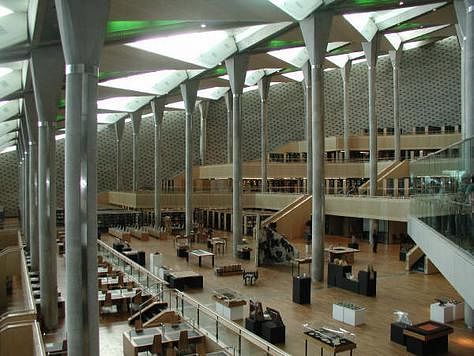
The citizens and students of Alexandria had formed a human chain protecting the library, so there was no violence at the site. These people were on both sides of the conflict. I believe that the creation of an open, not walled, space, slightly raised and public, allowed people to experience modern architecture in a certain way--and so they wanted to protect it.
Meerkats stand on a mound to keep an eye out for security. The more consequential things for us happen in section, I believe. We tend to move in plan, and section is more difficult for us, so we take note of it. 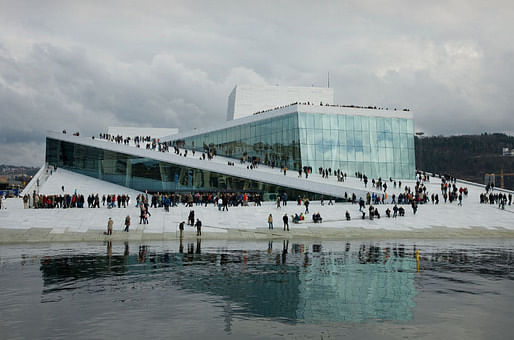
At our Oslo Opera House, there's a very narrow pathway, and everyone told us that it had to be wider. But we wanted it to be narrower because people have to rub shoulders and they have to be polite to people they've never met. All kinds of things also happen on the roof--I won't say what kind of things in polite company, but there's something interesting that happens in that space that lets you look onto many other spaces and is also kind of visible form below.

In Toronto, our library doesn't have any chairs or tables. You sit on bean bag chairs; it's disruptive learning. As the light passes through the screens, it is constantly flickering, so you're always aware of the daylight.
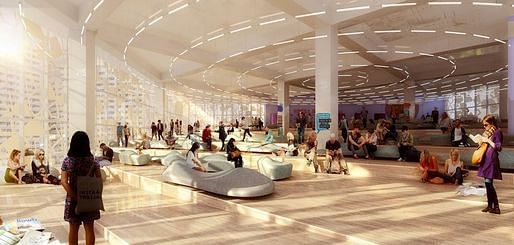

At our library in North Carolina, the building looks like it's looking at something. We use simple louvers and it's difficult to get such a soft line in architecture. 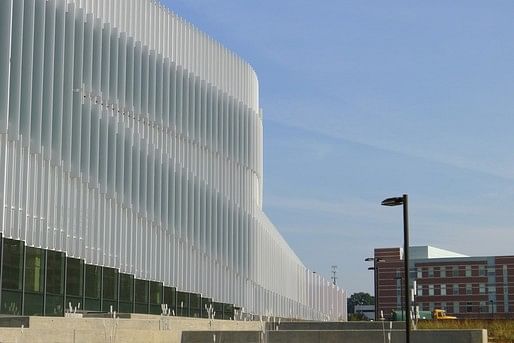
And the height of the trees always lines up with this line in the building, so it looks like it's lifting up in a way.
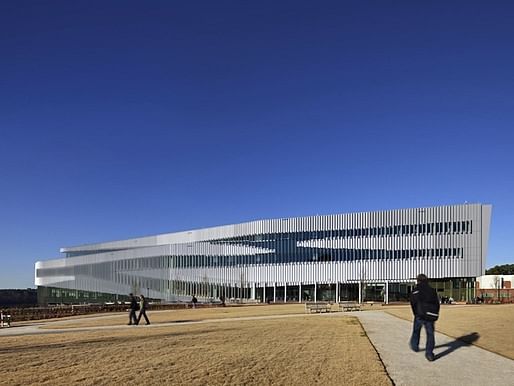
We decided to make a system of stairs that people would use more than an elevator, which is a challenge in a four storey building. And we were thinking how we could manipulate or nudge people to use the stairs. We thought: what is the color that people are most likely to wear? That's yellow, and we wanted the stair to stand out.

This is a robot that gets your book; it takes about 10 minutes. We put a strobe light on the bottom of the robot and you can watch through the glass as the robot gets it. Even if you don't want a book, you can tell it to "get me a book" and it randomly picks a book for you. Everybody loves to see it and it's increased the circulation of the library's books.

Anywhere in the building, when you see red, it's a bathroom. I don't know if the color prompts you to go pee.
On the top floor is a balcony; you can see it from outside the building so everyone knows that's a destination.
We put the stairs before the elevator, which is far--and we have videos showing people see the stairs, walk past, and get about halfway to the elevator and then turn around and head back to the stairs.
We wanted people to be able write on everything in the building, so we give out markers. If you can write on something, you own it.
How can we measure this? How can we measure how people get nudged through space? I'm very interested by Temple Grandin; she's autistic and autistic people sometimes have trouble making relationships with other people but do better with animals. She's written about how cattle are taken to their deaths, through a contraption. I've read her books--she writes a lot about cattle--and I've noticed that if you replace every time she says cattle with "humans" it still makes sense. 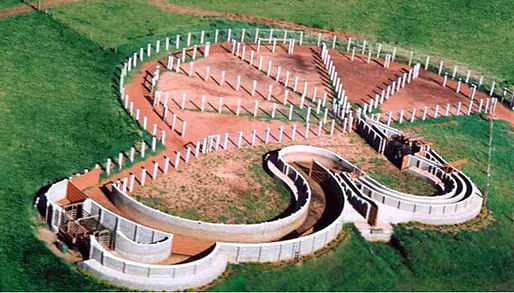
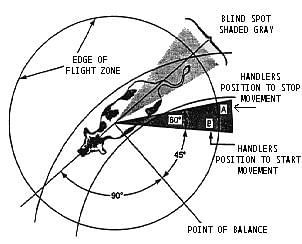
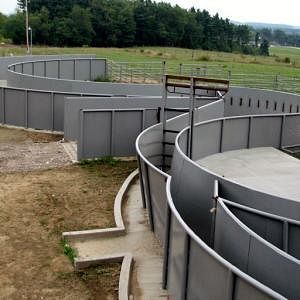
At a party, a sheepdog herded all the people out of the kitchen by gradually pushing on everyone's ankles. Nobody noticed what was happening but everyone was happy to finally be out of the kitchen.
If you put a bull in the center of cows, the cows make twice as much milk because of the presence of the bull. If the cows parade past the bull, they produce even more milk. I don't know what all that's about, but it's interesting to me that just the visual of the other sex, of the sex that your'e interested in, is powerful. We don't talk about that because sex is a dirty word.
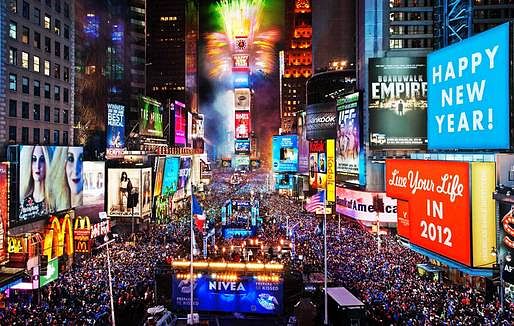
And that brings us to Times Square, because if there's any place where we don't act like humans but like cattle, it's Times Square. Our job is to help the city of New York to help make it more comfortable--to improve a space that tourists love and New Yorkers now almost universally hate. It's an unsafe place--the sidewalks are so narrow that the numbers of people who get hit by cars once they've pressed into the street, are high. So we started to talk about what that meant.
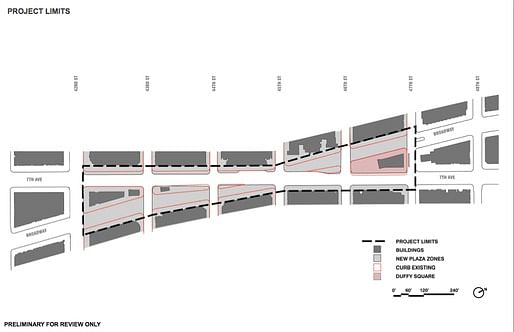

In the 60s (?), the billboards were all low and everybody was smart and turned off their building lights at night--so everything happened low. The lighted billboards started growing higher and higher, and it was [inhuman]. There's also a lot of water, and flooding. If you connect the dots of the heads of all the people in Times Square, they make a hammock shape. Times Square has an elevation shape--there's an 8 foot drop, a low point where everyone meets. If you look at he map, it's a rare spot in topography where four creeks come together. The current streets run along where the creeks used to be--Times Square used to be a kind of swamp or slump.
We went out there and saw how people would sit on anything--school groups on curbs. It was heartening to see how hardy people were. For example, a USA stand: people would lean on it, talk around it, photograph their child on it, eat off of it.
Traffic is heavy around Times Square. We started trying to improve the flow and realized that if you're trying to improve flow, the last thing you want to do is improve flow.
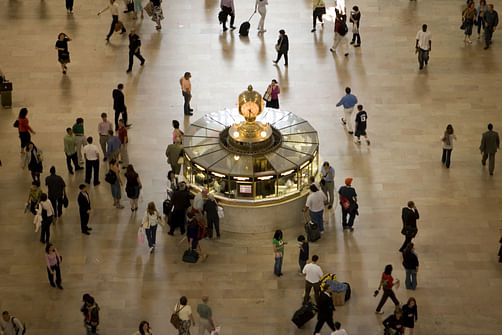
People always say that in Grand Central, nobody bumps into each other, but that in Penn Station everyone does. In Grand Central, there's an information kiosk in the middle, so everyone is inconvenienced by it equally--nobody can pass through the center and everyone is suddenly more polite to each other. So we started creating little eddies and places like that.
We're interested in Manhattanhenge--how the light comes exactly down Broadway or Seventh Avenue for a brief moment.
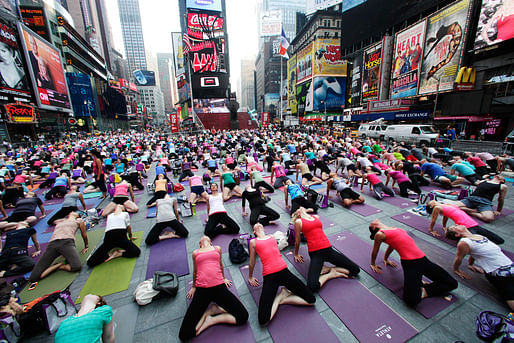
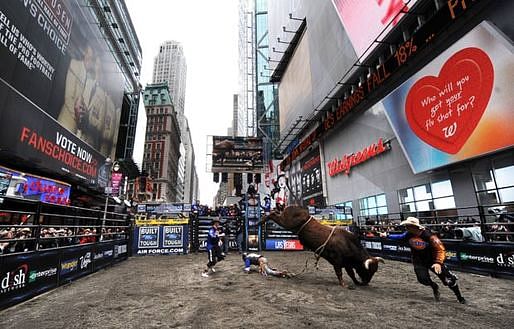 The benches are 50 feet long and they collect the crowds. There are also many events in Times Square and it used to be that you'd have to bring your own generator. Now the benches will include a power supply. When the benches are built I think people will become like meerkats, standing on the benches to see the square.
The benches are 50 feet long and they collect the crowds. There are also many events in Times Square and it used to be that you'd have to bring your own generator. Now the benches will include a power supply. When the benches are built I think people will become like meerkats, standing on the benches to see the square.
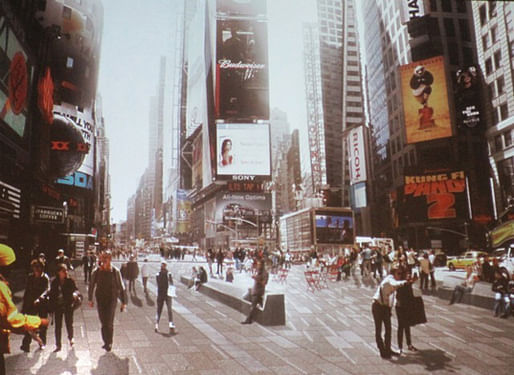

I was trying to buy oranges from a Chinese man and in my broken Chinese I said, "three oranges." He held up four fingers and said "three oranges." I held up three fingers. He held up his four fingers again and pointed to the spaces between each finger: one, two, three. My head fell apart! For the San Francisco MoMA we thought of this idea--using the space in between things and thinking of that instead of the thing itself.
End.
Question about mobile devices--how does our use of mobile devices affect how one designs for the city?
CED: I don't think we'll be using mobile devices forever--there'll be something else, we'll be walking around with Google Glass or something. To me the issue is more about attention.
Question about designing for cities. CED answers with a slideshow of Guinea and its capital, Conakry. [He met beautiful people and children there, but all the young people were leaving for the city, which is full of slums--you can buy fans, and locks, but they didn't need fans or locks in the country; and you can buy dolls "of white people."] In sum, cities are driven by a power structure--and architects can be a positive force for change in disrupting that power structure.
Thanks for reading!
Lian
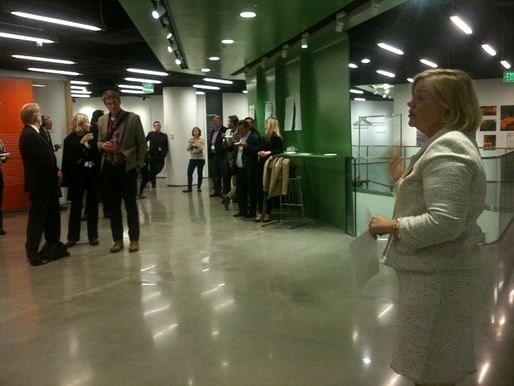

P.S. You should get AIA credit for reading my blog!
This blog was most active from 2009-2013. Writing about my experiences and life at Harvard GSD started out as a way for me to process my experiences as an M.Arch.I student, and evolved into a record of the intellectual and cultural life of the Cambridge architecture (and to a lesser extent, design/technology) community, through live-blogs. These days, I work as a data storyteller (and blogger at Littldata.com) in San Francisco, and still post here once in a while.



6 Comments
Yes. Exactly that. All of it.
"We are trying to strip authorship, which is why we're called Snøhetta."
LOL
Lian that isn't a half bad suggestion....
@Nam: the AIA credit? :D
I'd be fine with that...especially if I can collect the fees.
Thanks for putting that together. Very impressive.
Block this user
Are you sure you want to block this user and hide all related comments throughout the site?
Archinect
This is your first comment on Archinect. Your comment will be visible once approved.